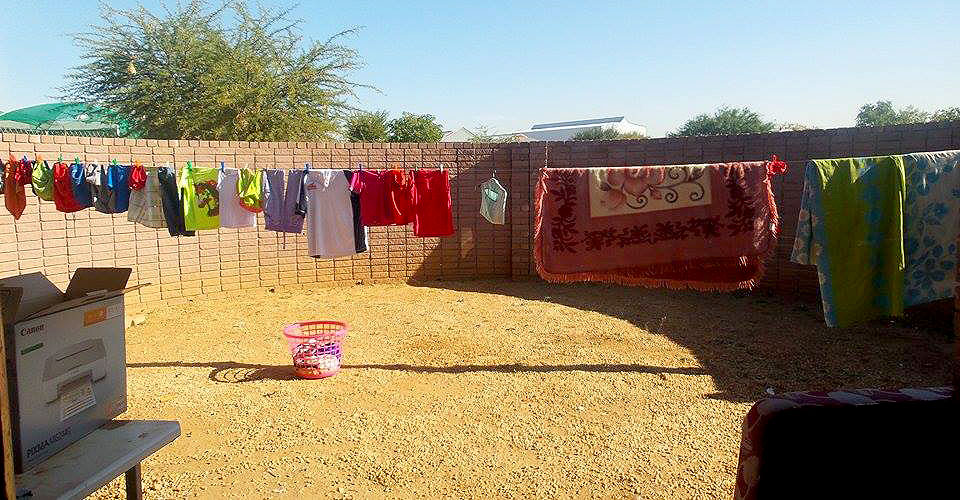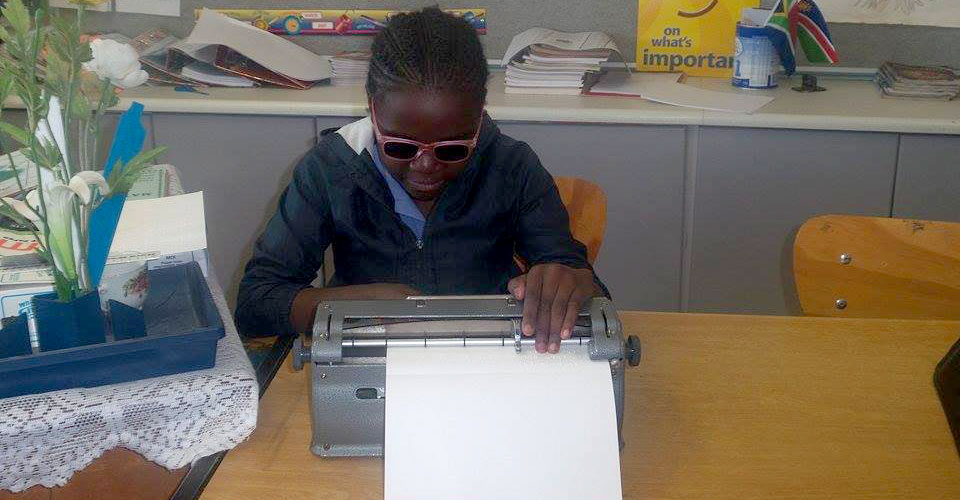
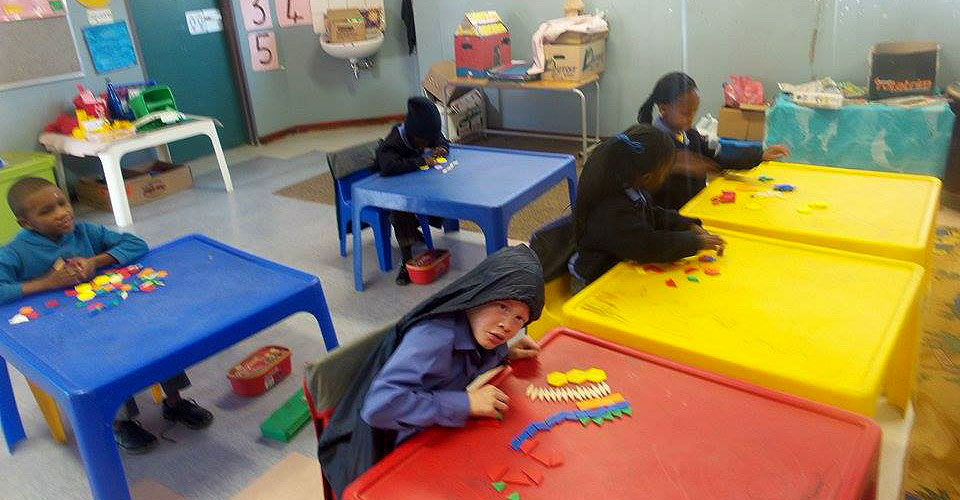
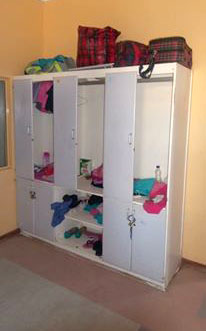
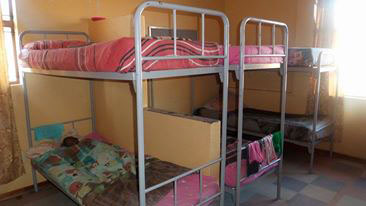 The National Institute of Special Education for Visually Impaired in Namibia is quite altered from a school system that one coming from Wisconsin would be familiar with. The physical set of the entire school contains three linked buildings. A lower primary, a middle school and a junior secondary. The hallways of the school are sidewalks outside that the students scurry to their next subject to and from, where they are greeted with clear skies and the lively sun. 80 percent of the students live at the school, called hostels; 40 children live in one hostel, where there are rooms with bunk beds touching each other and dining areas. In the schools, chalkboards take the place of dry erase boards and computers that our parents wouldn’t even recognize are set down in the back. The tip tap of braillers can be heard outside of all classrooms, but the question that constantly keeps our small group conversation upon, Is learning happening?
The National Institute of Special Education for Visually Impaired in Namibia is quite altered from a school system that one coming from Wisconsin would be familiar with. The physical set of the entire school contains three linked buildings. A lower primary, a middle school and a junior secondary. The hallways of the school are sidewalks outside that the students scurry to their next subject to and from, where they are greeted with clear skies and the lively sun. 80 percent of the students live at the school, called hostels; 40 children live in one hostel, where there are rooms with bunk beds touching each other and dining areas. In the schools, chalkboards take the place of dry erase boards and computers that our parents wouldn’t even recognize are set down in the back. The tip tap of braillers can be heard outside of all classrooms, but the question that constantly keeps our small group conversation upon, Is learning happening?
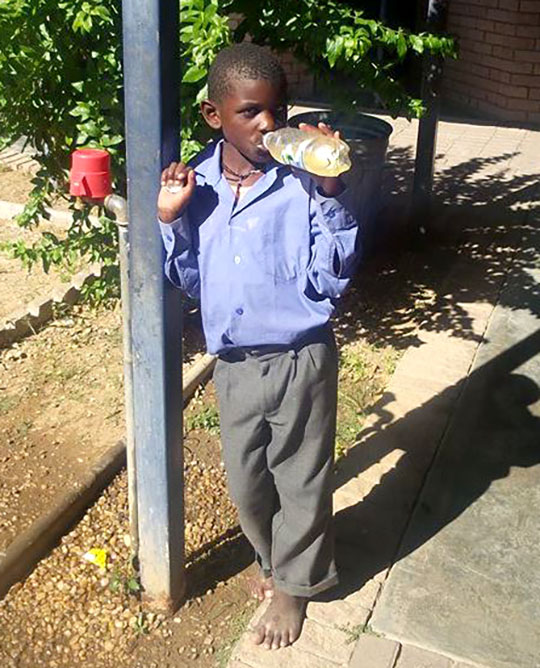 The physical set up however is not the only aspect of the school that is rather different then the school system of that in not only Wisconsin but in the Midwest. I do keep in mind that teaching students with visual impairments is more than a tough job, and it takes a special person to accommodate all of the students’ needs properly. All those hours of practicum to get preservice teachers ready for student teaching as well as student teaching is greatly appreciated because I can now realize we will be very equipped with skills that will carry individuals far within the school system.
The physical set up however is not the only aspect of the school that is rather different then the school system of that in not only Wisconsin but in the Midwest. I do keep in mind that teaching students with visual impairments is more than a tough job, and it takes a special person to accommodate all of the students’ needs properly. All those hours of practicum to get preservice teachers ready for student teaching as well as student teaching is greatly appreciated because I can now realize we will be very equipped with skills that will carry individuals far within the school system.
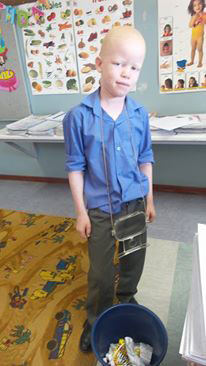 There are teachers that set the students spirits sky high with motivating speeches. There are educators who come in on their spare time to complete lesson plans weeks in advance and spend endless hours straining their fingers and eyes brailling textbooks and worksheets so no sight learners are included in on the lesson. There are teachers who walk these hallways where the passion leaks from their hearts and into their voices when they teach these children. To put it simply, you can tell they care. They care that the students understand the history of their country and the different types of soil. To care, it seems too simple, but that is the real component of a relationship with a student.
There are teachers that set the students spirits sky high with motivating speeches. There are educators who come in on their spare time to complete lesson plans weeks in advance and spend endless hours straining their fingers and eyes brailling textbooks and worksheets so no sight learners are included in on the lesson. There are teachers who walk these hallways where the passion leaks from their hearts and into their voices when they teach these children. To put it simply, you can tell they care. They care that the students understand the history of their country and the different types of soil. To care, it seems too simple, but that is the real component of a relationship with a student.
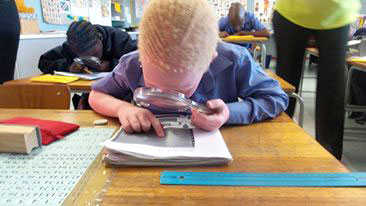 I find that it is also important to realize that the bodies that walk the halls are students–children with dreams and motives. They sing songs, they play games, they fight and laugh at aspects of the world that children should. They walk around the classroom with magnifying glasses draped around their necks so they are able to see what is on their paper. Like any other student they have the power to learn and they hunger this opportunity. They are grateful for what they receive and I am more than grateful for what they have shown me they can do. Every day they overpower a disability, every day they go to school and they attempt to get one step closer to a dream. That is something, in my opinion, that one should look up too.
I find that it is also important to realize that the bodies that walk the halls are students–children with dreams and motives. They sing songs, they play games, they fight and laugh at aspects of the world that children should. They walk around the classroom with magnifying glasses draped around their necks so they are able to see what is on their paper. Like any other student they have the power to learn and they hunger this opportunity. They are grateful for what they receive and I am more than grateful for what they have shown me they can do. Every day they overpower a disability, every day they go to school and they attempt to get one step closer to a dream. That is something, in my opinion, that one should look up too.
-Kelly
Kelly Mares, an elementary education and special education major, is blogging about her study abroad experience in Namibia, Africa.

